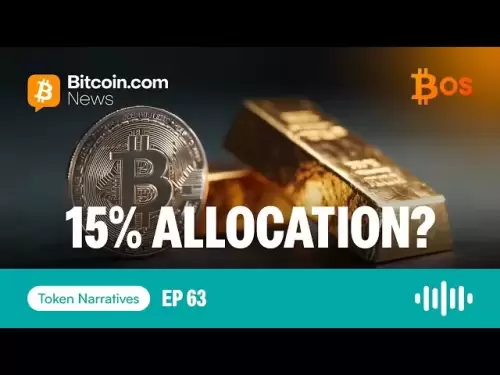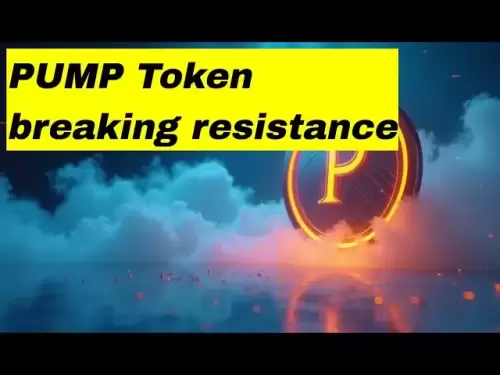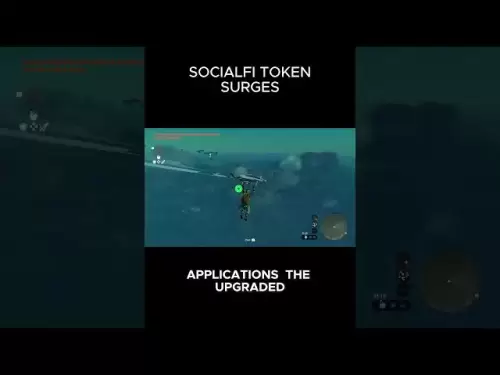-
 Bitcoin
Bitcoin $115200
-2.68% -
 Ethereum
Ethereum $3601
-5.16% -
 XRP
XRP $3.035
-2.96% -
 Tether USDt
Tether USDt $0.9997
-0.04% -
 BNB
BNB $764.5
-5.43% -
 Solana
Solana $168.1
-5.92% -
 USDC
USDC $0.9998
-0.02% -
 Dogecoin
Dogecoin $0.2090
-4.80% -
 TRON
TRON $0.3272
-0.49% -
 Cardano
Cardano $0.7306
-5.00% -
 Hyperliquid
Hyperliquid $39.16
-12.22% -
 Stellar
Stellar $0.3967
-4.96% -
 Sui
Sui $3.566
-5.95% -
 Chainlink
Chainlink $16.55
-6.57% -
 Bitcoin Cash
Bitcoin Cash $552.3
-3.90% -
 Hedera
Hedera $0.2516
-4.69% -
 Avalanche
Avalanche $21.99
-5.75% -
 Toncoin
Toncoin $3.621
-0.28% -
 Ethena USDe
Ethena USDe $1.000
-0.03% -
 UNUS SED LEO
UNUS SED LEO $8.951
0.02% -
 Litecoin
Litecoin $105.9
-3.59% -
 Shiba Inu
Shiba Inu $0.00001232
-5.00% -
 Polkadot
Polkadot $3.640
-5.55% -
 Uniswap
Uniswap $9.048
-7.03% -
 Monero
Monero $301.8
-1.51% -
 Dai
Dai $0.9999
-0.01% -
 Bitget Token
Bitget Token $4.334
-3.66% -
 Pepe
Pepe $0.00001064
-6.17% -
 Cronos
Cronos $0.1367
-5.78% -
 Aave
Aave $259.2
-4.59%
How to delegate staking tokens on Ledger Nano X?
To delegate staking tokens on a Ledger Nano X, set up your device, install the Cardano app, connect to a Cardano wallet, acquire ADA, choose a stake pool, and confirm delegation on your Ledger.
Apr 17, 2025 at 06:57 am
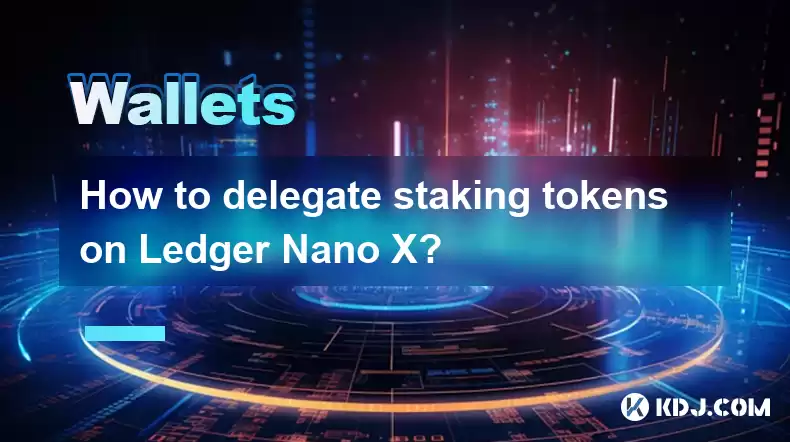
Delegating staking tokens on a Ledger Nano X involves a series of steps that ensure you can participate in blockchain networks' consensus mechanisms while keeping your assets secure. This process is particularly relevant for Proof of Stake (PoS) cryptocurrencies, where users can earn rewards by locking up their tokens to support network operations. In this guide, we will walk through the detailed steps required to delegate staking tokens using your Ledger Nano X, focusing on the popular cryptocurrency Cardano (ADA) as an example.
Preparing Your Ledger Nano X
Before you start delegating staking tokens, it's essential to ensure that your Ledger Nano X is set up correctly and updated to the latest firmware. Here’s how you can prepare your device:
- Connect your Ledger Nano X to your computer using the provided USB cable.
- Unlock your device by entering your PIN.
- Open the Ledger Live application on your computer.
- Navigate to the "Manager" section in Ledger Live.
- Install the Cardano (ADA) app if it's not already installed. To do this, search for "Cardano" in the app catalog, click on the app, and then click "Install."
Setting Up Your Cardano Wallet
Once your Ledger Nano X is prepared, you need to set up a Cardano wallet to manage your ADA tokens. Follow these steps:
- Open the Cardano app on your Ledger Nano X.
- Launch the Daedalus or Yoroi wallet on your computer. Both are compatible with Ledger and support Cardano staking.
- Select "Connect to Hardware Wallet" in your chosen wallet software.
- Follow the on-screen instructions to connect your Ledger Nano X to the wallet. You will need to confirm the connection on your device.
Acquiring ADA Tokens
To delegate staking tokens, you need to have ADA tokens in your wallet. If you don’t have any ADA yet, you can purchase them from a cryptocurrency exchange and transfer them to your Ledger-connected wallet:
- Buy ADA tokens from a reputable exchange like Binance or Coinbase.
- Withdraw the ADA tokens to your Cardano wallet address, which you can find in your Daedalus or Yoroi wallet.
Choosing a Stake Pool
Staking on the Cardano network involves delegating your ADA tokens to a stake pool. A stake pool is a group of Cardano node operators who collectively validate transactions and produce blocks. To choose a stake pool, consider the following factors:
- Pool performance: Look for pools with a high performance rating.
- Pool saturation: Avoid pools that are close to or at their saturation point, as this can affect your rewards.
- Pool fees: Compare the fixed and variable fees charged by different pools.
- Pool operator reputation: Research the background and reliability of the pool operators.
You can find a list of stake pools within your Daedalus or Yoroi wallet. Once you have identified a suitable pool, proceed to the next step.
Delegating Your ADA Tokens
Now that you have chosen a stake pool, you can delegate your ADA tokens. Here’s how to do it:
- Open your Daedalus or Yoroi wallet and ensure it is connected to your Ledger Nano X.
- Navigate to the "Delegation" or "Staking" section within the wallet.
- Search for the stake pool you want to delegate to by entering its name or pool ID.
- Select the pool and review its details, including performance, fees, and saturation.
- Click "Delegate" and enter the amount of ADA you want to delegate. You can delegate all or part of your ADA holdings.
- Confirm the delegation on your Ledger Nano X. You will be prompted to approve the transaction on your device.
After confirming the delegation, your ADA tokens will be locked to the chosen stake pool, and you will start earning staking rewards based on the pool’s performance.
Monitoring Your Staking Rewards
Once your ADA tokens are delegated, you can monitor your staking rewards within your wallet:
- Check the "Staking" or "Rewards" section in your Daedalus or Yoroi wallet to see your accumulated rewards.
- Keep an eye on the performance of your chosen stake pool to ensure it continues to meet your expectations.
- Adjust your delegation if necessary by repeating the delegation process with a different stake pool.
Frequently Asked Questions
Q: Can I change my stake pool after delegating my ADA tokens?
A: Yes, you can change your stake pool at any time. Simply follow the delegation process again and select a new pool. Your ADA tokens will be redelegated to the new pool, and you will start earning rewards based on its performance.
Q: How often are staking rewards distributed on the Cardano network?
A: Staking rewards on the Cardano network are distributed every epoch, which lasts for five days. You can see your rewards accumulate in your wallet after each epoch.
Q: Is there a minimum amount of ADA required to start staking?
A: No, there is no minimum amount of ADA required to start staking. However, the more ADA you delegate, the higher your potential rewards will be, as rewards are proportional to your stake in the pool.
Q: Can I use my ADA tokens while they are delegated to a stake pool?
A: No, your ADA tokens are locked when they are delegated to a stake pool. You cannot use them for transactions until you undelegate them, which can take several epochs to complete.
Disclaimer:info@kdj.com
The information provided is not trading advice. kdj.com does not assume any responsibility for any investments made based on the information provided in this article. Cryptocurrencies are highly volatile and it is highly recommended that you invest with caution after thorough research!
If you believe that the content used on this website infringes your copyright, please contact us immediately (info@kdj.com) and we will delete it promptly.
- Dogecoin's Price Support Under Fire: Can It Fend Off Competitors?
- 2025-08-02 04:30:12
- AI Cloud Mining: How AIXA Miners is Empowering Young Investors
- 2025-08-02 04:30:12
- Crypto Spotlight: Rollblock's Rise, Ripple's Resistance, and What It Means for Your Portfolio
- 2025-08-02 04:50:12
- Crypto's Golden Age: Tether Gold, Institutional BTC, and the Future of Finance
- 2025-08-02 04:50:12
- VeChain, Unilabs, XRP: Decoding August's Crypto Moves
- 2025-08-02 04:55:43
- Bitcoin, Whales, and Profit: Decoding Crypto's Latest Moves
- 2025-08-02 04:55:43
Related knowledge

What is a watch-only wallet in Trust Wallet?
Aug 02,2025 at 03:36am
Understanding the Concept of a Watch-Only WalletA watch-only wallet in Trust Wallet allows users to monitor a cryptocurrency address without having ac...

Why is my Trust Wallet balance zero?
Aug 02,2025 at 03:49am
Understanding Trust Wallet Balance Display IssuesIf you're seeing a zero balance in your Trust Wallet despite knowing you've previously received or se...
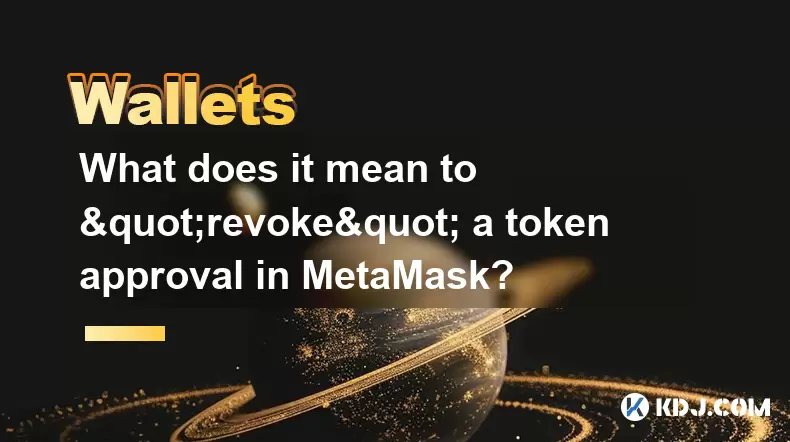
What does it mean to "revoke" a token approval in MetaMask?
Aug 02,2025 at 02:57am
Understanding Token Approvals in MetaMaskWhen interacting with decentralized applications (dApps) on Ethereum or EVM-compatible blockchains, users oft...
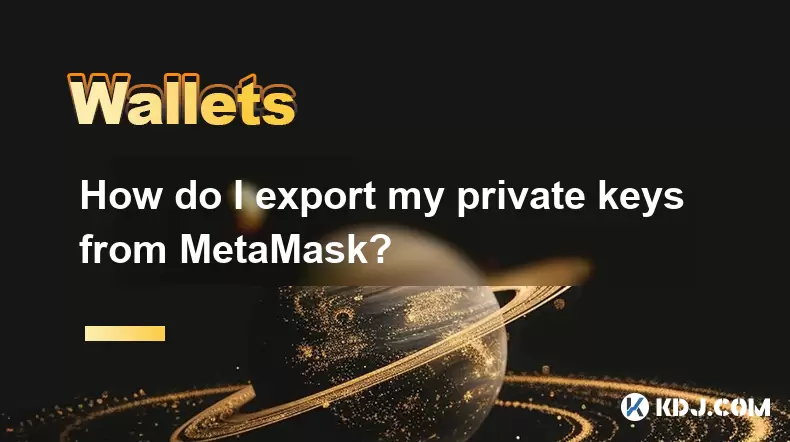
How do I export my private keys from MetaMask?
Aug 02,2025 at 05:21am
Understanding Private Keys in MetaMaskPrivate keys are cryptographic codes that grant full access to your cryptocurrency holdings on the blockchain. I...

How do I report a scam or a fraudulent token to MetaMask?
Aug 02,2025 at 03:22am
Understanding MetaMask’s Role in the EcosystemMetaMask is a non-custodial cryptocurrency wallet that allows users to interact with the Ethereum blockc...
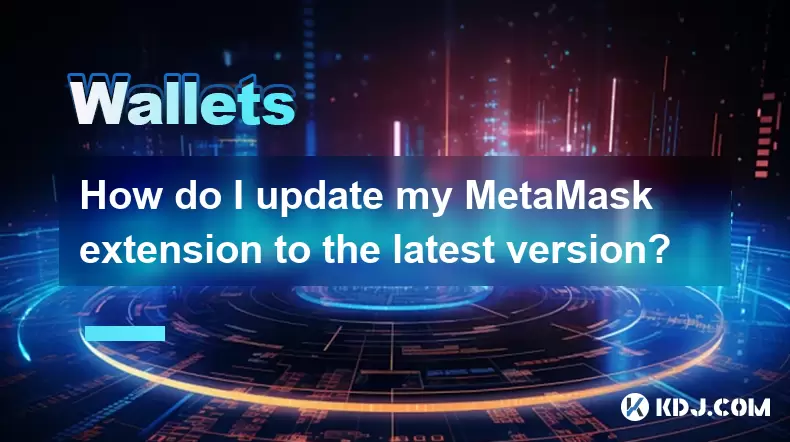
How do I update my MetaMask extension to the latest version?
Aug 02,2025 at 04:56am
Understanding the Importance of Updating MetaMaskKeeping your MetaMask extension updated is essential for both security and functionality. Developers ...

What is a watch-only wallet in Trust Wallet?
Aug 02,2025 at 03:36am
Understanding the Concept of a Watch-Only WalletA watch-only wallet in Trust Wallet allows users to monitor a cryptocurrency address without having ac...

Why is my Trust Wallet balance zero?
Aug 02,2025 at 03:49am
Understanding Trust Wallet Balance Display IssuesIf you're seeing a zero balance in your Trust Wallet despite knowing you've previously received or se...

What does it mean to "revoke" a token approval in MetaMask?
Aug 02,2025 at 02:57am
Understanding Token Approvals in MetaMaskWhen interacting with decentralized applications (dApps) on Ethereum or EVM-compatible blockchains, users oft...

How do I export my private keys from MetaMask?
Aug 02,2025 at 05:21am
Understanding Private Keys in MetaMaskPrivate keys are cryptographic codes that grant full access to your cryptocurrency holdings on the blockchain. I...

How do I report a scam or a fraudulent token to MetaMask?
Aug 02,2025 at 03:22am
Understanding MetaMask’s Role in the EcosystemMetaMask is a non-custodial cryptocurrency wallet that allows users to interact with the Ethereum blockc...

How do I update my MetaMask extension to the latest version?
Aug 02,2025 at 04:56am
Understanding the Importance of Updating MetaMaskKeeping your MetaMask extension updated is essential for both security and functionality. Developers ...
See all articles





















